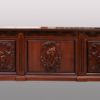When it comes to elegant and stylish home furnishings, the accent invariably falls upon wood furniture. The outstanding beauty and endurance characteristic of solid wood make it a valuable element of the home décor that can withstand the test of time and become a treasured family heirloom. To remain in excellent condition after many years of daily use, however, wood furniture needs to be properly cared for and protected.
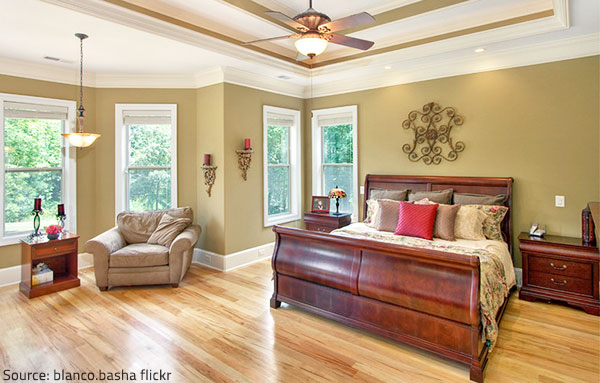
Wood combines endurance and grandeur with elegance and great subtlety.
Protecting wood furniture is not too much of a challenge when you know what to do. In fact, some quite simple and easy precautionary measures will help you successfully prevent scratches, dents, stains, and other damage to your wooden furniture pieces.
How to Protect Wood Furniture from Scratches
Placing any sharp-edged items directly onto the delicate wood surface can result in numerous tiny scratches. Therefore, you need to be very careful about what you put on your furniture and how you put it there:
- Never toss hard objects directly onto the wood. It is a good idea to put small bowls or trays atop entry tables and night stands to hold keys, watches, jewelry, and other personal items;
- Never drag dishes, glasses, vases, or other items across a wood surface – just pick up the piece you want to move;
- Use coasters, pads, or mats under bowls, cups, pots, and other similar items to protect the wood from scratches, stains, and heat. However, don’t use plastic or rubber pads on natural wood as they may soften and damage the finish;
- If you keep bowls, lamps, framed photos, pieces of art, collectibles, or any other decorative objects arranged on your wood furniture pieces, make sure there is a felt or cork pad attached underneath each object;
- Use linen or cotton tablecloths (or placemats) when dining. Vinyl tablecloths are not recommended as they can leave a residue;
- Never use crafts supplies, nail polish, and other similar materials on top of your wood furniture. They can easily damage the finish by chemically affecting it, bleeding onto the wood, or staining the surface. Even a ballpoint pen can leave marks and small dents;
- Find efficient ways to protect wooden furniture from your playful pets – provide scratching posts, use protective covers, or whatever is applicable in your case.
If tiny scratches appear on the wood despite your efforts, you can conceal them with suitable products. If the scratches are large, you can try using a felt tip pen or shoe polish in an appropriate color. If the results are still not satisfactory, you may want to consider professional furniture refinishing.
How to Protect Wood Furniture from Sun Damage and Heat
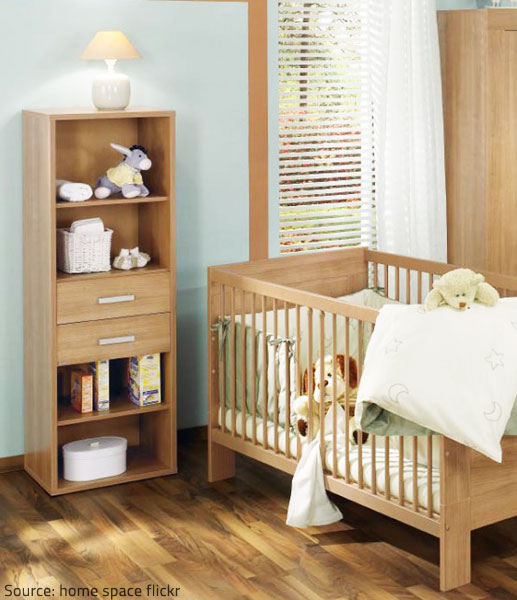
You need to find the most suitable place for every wooden furniture piece you own when creating your home design.
When exposed to direct sunlight or intense heat, the wood will dry out too much (so it will easily shrink and crack) and the fine finish will fade. So, you need to make a conscious effort to protect your wooden furniture from heat and sun damage:
- Keep wood pieces away from direct sunlight to protect the finish from fading;
- Apply a thin screen or film on the windows to prevent UV light from entering the room;
- Avoid placing hot pans or dishes directly on wood surfaces – use trivets or hot pads under the hot items you put on your wood table or cover it with a protective pad that fits over the entire tabletop. Allow dishes that are taken straight out of the oven to cool a bit before setting them on a wood surface, even if the surface is protected;
- Keep your wood furniture away from fireplaces, radiators, and other heat sources, including ovens, boilers, and heating vents;
- Maintain an indoor temperature of 70 to 75 degrees Fahrenheit and a humidity level of 50 to 55 percent to prevent the wood from drying out and splitting.
Have in mind that extremely dry conditions should be avoided as dry air can cause the wood to splinter, shrink, or become brittle. Yet, excessive humidity can be even more harmful.
How to Protect Wood Furniture from Moisture and Mold
Moisture greatly affects wood furniture – a high humidity level may cause the wood to swell or may result in mold growth on your furniture. To prevent moisture damage to your wooden pieces, you are recommended to:
- Run a home dehumidifier to maintain a relative indoor humidity of about 50 percent;
- Use waterproof covers to protect your wood furniture from excessive moisture;
- Position your wooden pieces away from sources of moisture, such as steam from the kitchen or from the bathroom;
- Make sure your entire home is mold-free, as mold spores growing on other surfaces will quickly affect your wood furniture as well.
How to Protect Wood Furniture from Water Stains
Water rings can easily appear on wood furniture when spilled liquids stay on the surface long enough for the moisture to damage the finish and absorb into the wood. Therefore, make sure you:
- Use coasters under cups and glasses to protect your wood furniture from water rings and condensation;
- Cover wood tables with a tablecloth to protect them from spills, scratches and heat alike;
- Blot any spills immediately;
- Set waterproof trays under plant pots that stay on wood furniture.
It is a good idea to order custom glass tops that will perfectly fit your elegant wooden tables – they will protect the entire wood surface without concealing its beauty.
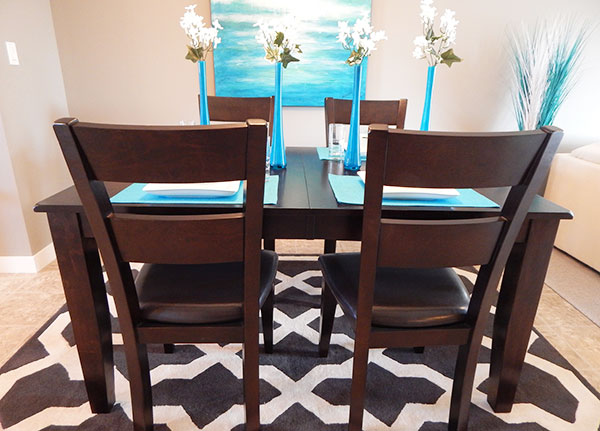
Regular cleaning and waxing will help you preserve the gorgeous look and feel of your wood furniture for many years.
How to Care for Wood Furniture
Wood is inherently durable and easy to maintain, so proper wood furniture care requires little effort on your part. You just need to know how to do things right.
Wood Furniture Cleaning Tips
Regular cleaning is essential not only for the good looks of your wooden pieces, but also for their ultimate protection.
1) Dust frequently – use a soft, dry cloth to collect dust and dirt particles from the wood surfaces. Have in mind that feather dusters are not safe to use on fine wood finishes as the spines in the feathers can cause some damage. Sponges are also too abrasive for the delicate wood surface and, therefore, not recommendable;
2) Clean wood furniture on a weekly basis – use a lint-free dusting cloth dampened with wood furniture polish to remove grease, dust, and grime from the wood surfaces;
3) Be careful when choosing a wood cleaner:
- Avoid using water-based cleaning products on your wood furniture as excessive moisture can damage the finish and cause the wood to warp;
- Avoid using ammonia on your wood furniture as it can discolor the wood;
- Avoid citrus-based cleaners and other harsh cleaning agents that are too strong and can damage the wood finish;
- Keep in mind that many solvent-based sprays and wipes include chemicals that can break down the finish or leave behind a sticky residue that will easily accumulate dust and dirt.
Wood Furniture Polishing Tips
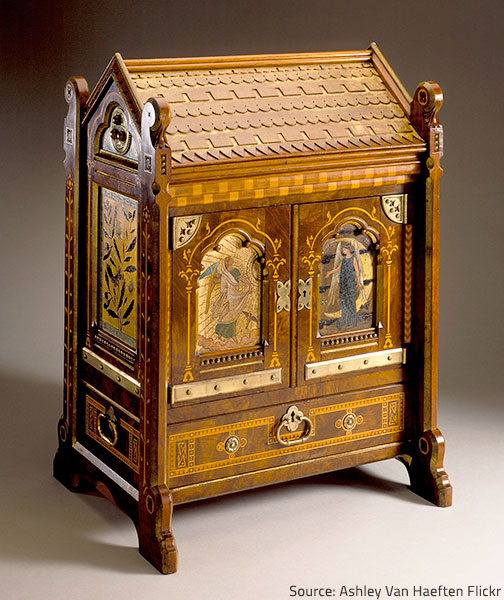
Exquisite wooden pieces often become treasured family heirlooms.
For best protection, you are advised to have your wood furniture polished three to four times a year. However, be careful to:
- Wipe off extra polish before it dries – excessive polish may build up and dull the appearance of your wood furniture;
- Use an appropriate type of wood furniture polish and never mix different polishing products;
- Remove the metal knobs and pulls of your furniture when polishing them. Otherwise, the harsh chemicals in the metal polish may damage the wood. Be careful not to scratch the surfaces when putting the metal hardware back in place.
High quality wax provides excellent protection to wood furniture. Apply a thin coat, wait for five minutes, and buff lightly with a soft brush or cloth. Buff again in about an hour. This will restore the beautiful shine of the wood surface and will keep it protected for many months.
Remember that your wood furniture can be easily damaged unless it is properly protected. In such unfortunate cases, your best bet is to use professional furniture restoration and repair services – the experienced specialists will not only efficiently restore the original grandeur of your pieces, but will also provide them with the best possible protection. You will be able to enjoy your fine wood furniture for many years and to pass it to the next generations as a cherished family heirloom.









